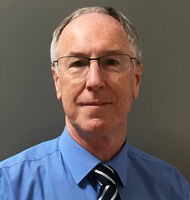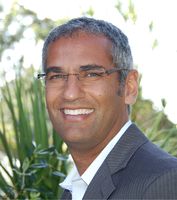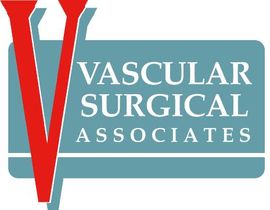Central Auckland, East Auckland, North Auckland, South Auckland, West Auckland > Private Hospitals & Specialists >
Vascular Surgical Associates
Private Service, General Surgery, Vascular Surgery
Description
Consultants
-

Dr Russell Bourchier
Vascular Surgeon
-

Dr Ian Civil
Vascular Surgeon
-

Dr Giri Mahadevan
Vascular Surgeon
-

Dr Carl Muthu
Vascular Surgeon
Referral Expectations
Procedures / Treatments
This is the dilatation or ballooning of a section of the aorta which is the main artery coming out of the heart. An aneurysm usually occurs because of an underlying weakness in the wall of the aorta at that point. Very often you will not have any symptoms from the aneurysm and it may only be discovered through a chest x-ray or CT scan. If the aneurysm begins to get larger or leak, you may experience chest or back pain. If there is a risk of the aneurysm bursting, vascular surgery will be required.
This is the dilatation or ballooning of a section of the aorta which is the main artery coming out of the heart. An aneurysm usually occurs because of an underlying weakness in the wall of the aorta at that point. Very often you will not have any symptoms from the aneurysm and it may only be discovered through a chest x-ray or CT scan. If the aneurysm begins to get larger or leak, you may experience chest or back pain. If there is a risk of the aneurysm bursting, vascular surgery will be required.
You have two carotid arteries, one on either side of your neck, that supply blood to your brain. Carotid artery disease occurs if these arteries become narrowed due to atherosclerosis (a build up of fat and cholesterol deposits on the inner walls of the vessels). If a clot forms in one of the carotid arteries and reduces or stops the flow of blood to part of your brain, it may cause a stroke. You have an increased risk of developing carotid artery disease if you: · have a family history of atherosclerosis · smoke · have high blood pressure (hypertension) · have diabetes · have coronary artery disease. Treatment may involve lifestyle changes e.g. stopping smoking, exercising more, dietary changes and/or medication. If there is severe narrowing of the arteries, treatment may involve vascular surgery.
You have two carotid arteries, one on either side of your neck, that supply blood to your brain. Carotid artery disease occurs if these arteries become narrowed due to atherosclerosis (a build up of fat and cholesterol deposits on the inner walls of the vessels). If a clot forms in one of the carotid arteries and reduces or stops the flow of blood to part of your brain, it may cause a stroke. You have an increased risk of developing carotid artery disease if you: · have a family history of atherosclerosis · smoke · have high blood pressure (hypertension) · have diabetes · have coronary artery disease. Treatment may involve lifestyle changes e.g. stopping smoking, exercising more, dietary changes and/or medication. If there is severe narrowing of the arteries, treatment may involve vascular surgery.
Peripheral arterial disease refers to the narrowing of arteries outside the heart and brain, usually as the result of atherosclerosis or "hardening of the arteries" (a build up of fatty deposits on the inner wall of arteries). When the arteries become narrowed, the flow of blood to the target organs or tissues is reduced. The arteries commonly affected are those carrying blood to the kidneys, stomach, arms and legs. Peripheral arterial disease often appears first in your legs, with the most common symptom being dull, cramping leg pain that occurs when exercising but stops when you stand still. This is known as "intermittent claudication". Treatment for peripheral arterial disease may involve medication and/or vascular surgery.
Peripheral arterial disease refers to the narrowing of arteries outside the heart and brain, usually as the result of atherosclerosis or "hardening of the arteries" (a build up of fatty deposits on the inner wall of arteries). When the arteries become narrowed, the flow of blood to the target organs or tissues is reduced. The arteries commonly affected are those carrying blood to the kidneys, stomach, arms and legs. Peripheral arterial disease often appears first in your legs, with the most common symptom being dull, cramping leg pain that occurs when exercising but stops when you stand still. This is known as "intermittent claudication". Treatment for peripheral arterial disease may involve medication and/or vascular surgery.
Treatment for peripheral arterial disease may involve medication and/or vascular surgery.
These are bulging veins that lie just beneath the skin (superficial veins). They occur when the walls of a vein are weak or damaged or if the valves in the vein that normally stop the blood from flowing backwards are impaired, resulting in pooling of the blood and stretched veins. Besides being unattractive, varicose veins can be painful and cause swelling, inflammation or ulceration. Minor varicose veins may be able to be treated by injection sclerotherapy but more significant varicose veins are usually more effectively treated by vascular surgery. At surgery the faulty valves are tied off and the damaged veins removed. The main damaged vein is usually stripped out from the thigh area whereas the smaller bulging veins are usually removed through small cuts directly over them. The cuts (incisions) made in the skin are closed with steristrips. You will need to wear stockings over the treated area for some time after surgery. This procedure requires anaesthesia. In some cases significant varicose veins can also be treated by laser treatment (EVLT - endovenous laser treatment). This is a walk-in, walk-out procedure performed under local anaesthesia at our rooms. It involves inserting a laser fibre into the faulty vein under ultrasound guidance, then doing injections around the vein to numb the vein and collapse it around the laser fiber. Finally the laser fiber is activated and as it is slowly withdrawn heat from the laser ablates the vein shutting it down. Some patients will need subsequent injection sclerotherapy to eliminate any residual veins in the calf area. The main advantages of laser treatment over traditional surgery are the minimal scarring and the faster recovery time.
These are bulging veins that lie just beneath the skin (superficial veins). They occur when the walls of a vein are weak or damaged or if the valves in the vein that normally stop the blood from flowing backwards are impaired, resulting in pooling of the blood and stretched veins. Besides being unattractive, varicose veins can be painful and cause swelling, inflammation or ulceration. Minor varicose veins may be able to be treated by injection sclerotherapy but more significant varicose veins are usually more effectively treated by vascular surgery. At surgery the faulty valves are tied off and the damaged veins removed. The main damaged vein is usually stripped out from the thigh area whereas the smaller bulging veins are usually removed through small cuts directly over them. The cuts (incisions) made in the skin are closed with steristrips. You will need to wear stockings over the treated area for some time after surgery. This procedure requires anaesthesia. In some cases significant varicose veins can also be treated by laser treatment (EVLT - endovenous laser treatment). This is a walk-in, walk-out procedure performed under local anaesthesia at our rooms. It involves inserting a laser fibre into the faulty vein under ultrasound guidance, then doing injections around the vein to numb the vein and collapse it around the laser fiber. Finally the laser fiber is activated and as it is slowly withdrawn heat from the laser ablates the vein shutting it down. Some patients will need subsequent injection sclerotherapy to eliminate any residual veins in the calf area. The main advantages of laser treatment over traditional surgery are the minimal scarring and the faster recovery time.
Hyperhidrosis is excessive sweating that may occur over the entire body or only in certain parts, most commonly the face, underarms, palms of the hands and soles of the feet. It may also refer to severe facial blushing. This condition is caused by overactivity of the nerves that carry messages to the affected sweat glands. These nerves are part of the 'sympathetic' nervous system, which means that they are 'involuntary' or not under our conscious control. Treatment may be with medication or, for facial and palm sweating, may involve a vascular surgical procedure known as Endoscopic Thoracic Sympathectomy (ETS). This is a minimally invasive procedure (it does not require a large incision or cut to be made) and involves interrupting the nerves that supply the sweat glands.
Hyperhidrosis is excessive sweating that may occur over the entire body or only in certain parts, most commonly the face, underarms, palms of the hands and soles of the feet. It may also refer to severe facial blushing. This condition is caused by overactivity of the nerves that carry messages to the affected sweat glands. These nerves are part of the 'sympathetic' nervous system, which means that they are 'involuntary' or not under our conscious control. Treatment may be with medication or, for facial and palm sweating, may involve a vascular surgical procedure known as Endoscopic Thoracic Sympathectomy (ETS). This is a minimally invasive procedure (it does not require a large incision or cut to be made) and involves interrupting the nerves that supply the sweat glands.
Vascular ulcers are open wounds on the skin that do not heal or that keep coming back once they do heal. They occur because there is not enough blood being supplied to the skin to heal injuries that may be caused by minor trauma or pressure. Arterial or ischaemic ulcers are usually the result of atherosclerosis or "hardening of the arteries" (a build up of fatty deposits on the inner wall of arteries). When the arteries become narrowed, the flow of blood to the tissues is reduced. These ulcers are usually found on the toes and edge of the foot and are often very painful. Treatment for arterial ulcers may involve surgery. Venous or stasis ulcers occur when impaired blood flow in the veins causes pooling of blood in the legs. These ulcers are often associated with varicose veins. Venous ulcers are usually found on the lower leg between the knee and the ankle and the leg is often swollen and discoloured. Compression or pressure bandages are the main treatment for venous ulcers although vascular surgery may be required in some patients.
Vascular ulcers are open wounds on the skin that do not heal or that keep coming back once they do heal. They occur because there is not enough blood being supplied to the skin to heal injuries that may be caused by minor trauma or pressure. Arterial or ischaemic ulcers are usually the result of atherosclerosis or "hardening of the arteries" (a build up of fatty deposits on the inner wall of arteries). When the arteries become narrowed, the flow of blood to the tissues is reduced. These ulcers are usually found on the toes and edge of the foot and are often very painful. Treatment for arterial ulcers may involve surgery. Venous or stasis ulcers occur when impaired blood flow in the veins causes pooling of blood in the legs. These ulcers are often associated with varicose veins. Venous ulcers are usually found on the lower leg between the knee and the ankle and the leg is often swollen and discoloured. Compression or pressure bandages are the main treatment for venous ulcers although vascular surgery may be required in some patients.
This is a procedure in which a small tube is placed into a large vein in the body so that multiple doses of intravenous medicines, usually antibiotics or chemotherapy, can be given painlessly without the need for frequent intravenous drip insertions. It requires a short general anaesthetic (you will sleep through the procedure) but is most often a "day stay" visit. The usual type of portal is a bubble placed completely under the skin although sometimes there is a small tube coming out through the skin. Once the course of treatment is completed the device is readily removed under local or general anaesthetic.
This is a procedure in which a small tube is placed into a large vein in the body so that multiple doses of intravenous medicines, usually antibiotics or chemotherapy, can be given painlessly without the need for frequent intravenous drip insertions. It requires a short general anaesthetic (you will sleep through the procedure) but is most often a "day stay" visit. The usual type of portal is a bubble placed completely under the skin although sometimes there is a small tube coming out through the skin. Once the course of treatment is completed the device is readily removed under local or general anaesthetic.
This is a procedure in which a small tube is placed into a large vein in the body so that multiple doses of intravenous medicines, usually antibiotics or chemotherapy, can be given painlessly without the need for frequent intravenous drip insertions.
It requires a short general anaesthetic (you will sleep through the procedure) but is most often a "day stay" visit. The usual type of portal is a bubble placed completely under the skin although sometimes there is a small tube coming out through the skin. Once the course of treatment is completed the device is readily removed under local or general anaesthetic.
Pharmacy
Website
Contact Details
Mercy Specialist Centre, 100 Mountain Road, Epsom, Auckland
Central Auckland
-
Phone
(09) 623 7503
Healthlink EDI
vsagroup
Email
Website
Mercy Specialist Centre
Entrance B Level One
100 Mountain Road
Epsom
Auckland 1023
Street Address
Mercy Specialist Centre
Entrance B Level One
100 Mountain Road
Epsom
Auckland 1023
Was this page helpful?
This page was last updated at 9:56AM on March 13, 2024. This information is reviewed and edited by Vascular Surgical Associates.

